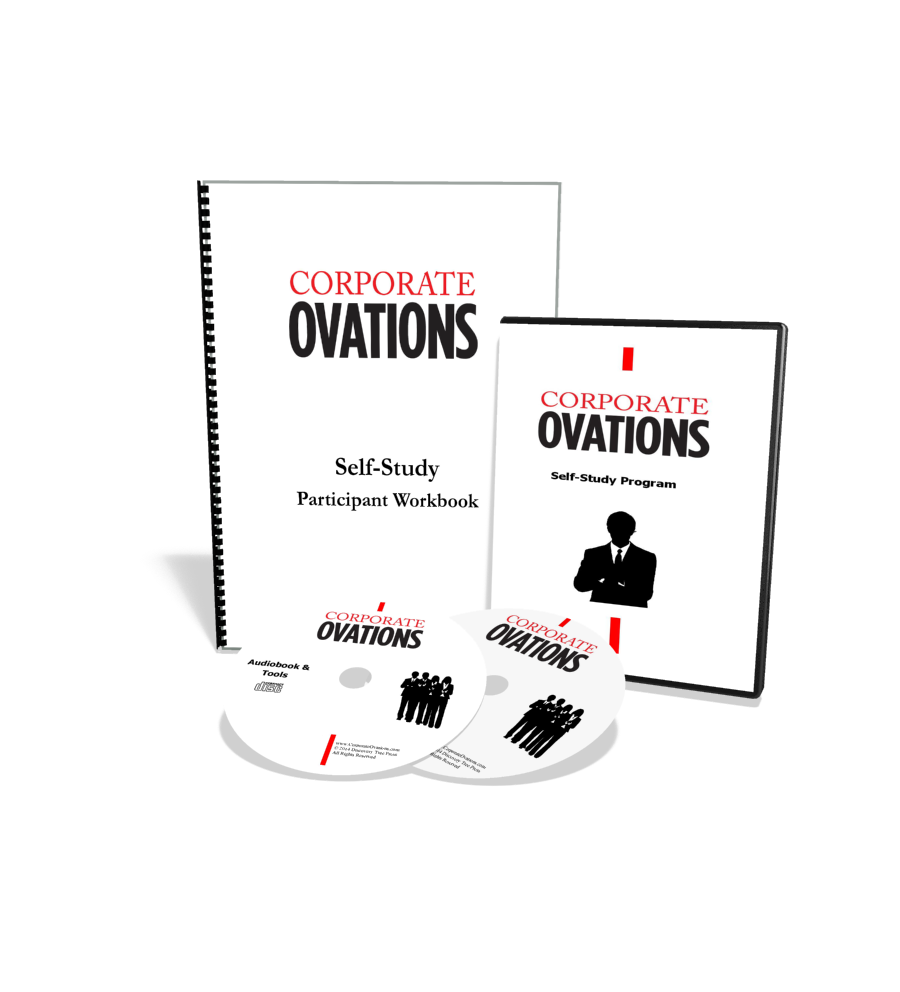When I begin a communication workshop the topic of first impressions always comes up. We start by defining the three areas of impression your audience will have of you. One student will usually say, “So I just need to make sure that when I start speaking I’m demonstrating all three of these, right?” Well, the answer is “Yes, but…”

Unfortunately, you don’t get off that easy. You can’t just focus on these for the first few seconds of speaking. You need to demonstrate these three to your team… always! In other words, the best leaders are consistent with their team communication. The messages may change, but the leader is consistent.
What are the 3 Pieces of Leader Presence?
The three areas of impression with any audience are how you demonstrate your confidence, your approachability, and your vision. Each of these are observed by the audience, whether they know it or not. Most of them don’t know they’re picking up on these individual things, but if you ask them after the presentation, “Did you like the leader and her message?” they will immediately be able to tell you “Yes!” or “No!” even if they can’t articulate why!
Starting today and continuing over the next two weeks I’ll share with you what I’ve learned about developing Leader Presence in each of these impression areas.
- Today, February 11th – Confidence
- Sunday, February 18th – Approachability
- Sunday, February 25th – Vision
The 1st Piece: Confidence
Every follower wants to know that the leader knows what he is doing! While Robert’s Rules of Order doesn’t provide for a motion of no confidence, in parliamentary government you can make such a motion to publicly voice your lack of confidence in the leader. WOW! Can you imagine if audiences publicly voiced their level of confidence in the leader once he began speaking?
Well, I hate to be the bearer of bad news, but while most audience members are too kind to actually speak their level of confidence out loud… they are all thinking it! No joke. Think about the last time you saw a speaker take the stage. While you were listening, did any of these thoughts cross your mind?
- “Wow, he looks a little nervous.”
- “She sounds like a timid mouse up there!”
- “Whoa, that guy can’t even look the audience in the eye!”
- “Oh no… this looks like it’s going to be disaster.”
- “I can hear the tremor in her voice. She is so nervous!”
Each of these statements expose your current level of confidence, or lack thereof, in the speaker.
How can we Demonstrate Confidence?
I’d love to tell you there is a magic trick to easily demonstrate confidence, but there isn’t. Well, let me put it this way and I know I’ve said this before… like many things in life, it’s simple, but that doesn’t make it easy! Here are three areas I coach into my executive speakers to help them display their confidence to the audience.
1. Be yourself
This is not rocket science, but I’ve taught rocket scientists before and I get the feeling some of my technical customers wish that this was rocket science… because that would be easier to master! I can’t stress this enough… do NOT memorize a bunch of hand gestures or conform to somebody’s coaching to put your hands in a certain spot. You already know how to do this, so don’t complicate things! I subscribe to the same thinking as fellow leadership communication coach Kristi Hedges author of The Power of Presence. She emphasizes this all the time… just be yourself!
Your audience interprets confidence from your authentic presence. This is when nothing looks forced and when you don’t look fake. The only way you’ll ever be yourself when speaking in front of others is when you’re comfortable in front of others. So now this begs the question, “How do I get comfortable in front of others?” Read on to the next tip…
2. Give the audience what they came for
Every audience shows up for a reason. As the speaker, you showed up for a reason. You have a goal. Guess what? The audience showed up for something too. Even if you’re thinking, “Yeah, they showed up because I’m their boss and I told them to be there!” that’s okay. But, when they don’t get what they came for, they start to check out (usually with a smart phone!) What are they expecting from you? What will they want and need from you?
Your goal as the speaker is to move them from where they are today, to where you want them to be tomorrow. If you’re thinking, “What will it take to get them there? How can I make sure I give the audience what they came for?” Read on to the final tip…
3. Know your stuff
This means you’ve got to be prepared. While you don’t need to be the smartest person in the room on your subject, you do need to know what you’re talking about. Unless this is your board of review for your doctorate, this isn’t a test. You’re expected to know your subject, but the audience doesn’t need you to showcase brilliance. You know they all showed up for a reason. Now make sure you know your stuff well enough so you can give it to them!
As you prepare your message, ask yourself these four questions:
- How much do they KNOW today?
- How much do I need them to KNOW tomorrow?
- How much do they really CARE about this today?
- How much do I need them to CARE about this tomorrow?
As I said above, leader presence is simple, but it’s not always easy. Showing your team you’re confident increases your credibility to the audience. This is the first leg of the 3-legged stool you’ll need to develop your most effective leader presence.
Next week we look into the 2nd leg of the stool. It’s the audience impression called… APPROACHABILITY.
Best,
Russ
Let’s connect on Twitter if we haven’t already?
OR Let’s connect via my Facebook page!
Get the Corporate Ovations Video Self-Study Course for FREE!
 Public speaking and presentation skills are a key to your career success. Learn the same skills we’ve taught to thousands of corporate customers over the past decade in this FREE video-based program. It’s all designed to help make you a better speaker no matter what your skill level.
Public speaking and presentation skills are a key to your career success. Learn the same skills we’ve taught to thousands of corporate customers over the past decade in this FREE video-based program. It’s all designed to help make you a better speaker no matter what your skill level.
When you sign up for my weekly blog I’ll send you a link to iSpeak’s Corporate Ovations Self-Study Course. It comes with 12 lessons on public speaking. Each lesson includes a teaching video, exercise, application exercise and a challenge to get you out of your comfort zone. You can get the Self-Study Course here.
Books mentioned in this post:
The Power of Presence, by Kristi Hedges
iSpeak teaches workshops on Professional Selling to help sales leaders gather the most important data and then use that information to create the right message. Are your sales presentations closing eyelids or deals?
Russ Peterson Jr. is the co-founder and Managing Director of iSpeak, Inc. – An award-winning professional development training company. Russ is a speaker, international trainer, and published author on Professional Sales Communication and Business Communication. He delivers workshops, keynotes, and personal communication coaching services to business professionals in the US and around the world. You can connect with Russ directly through Twitter, Facebook and LinkedIn.



Please note: I reserve the right to delete comments that are offensive or off-topic.